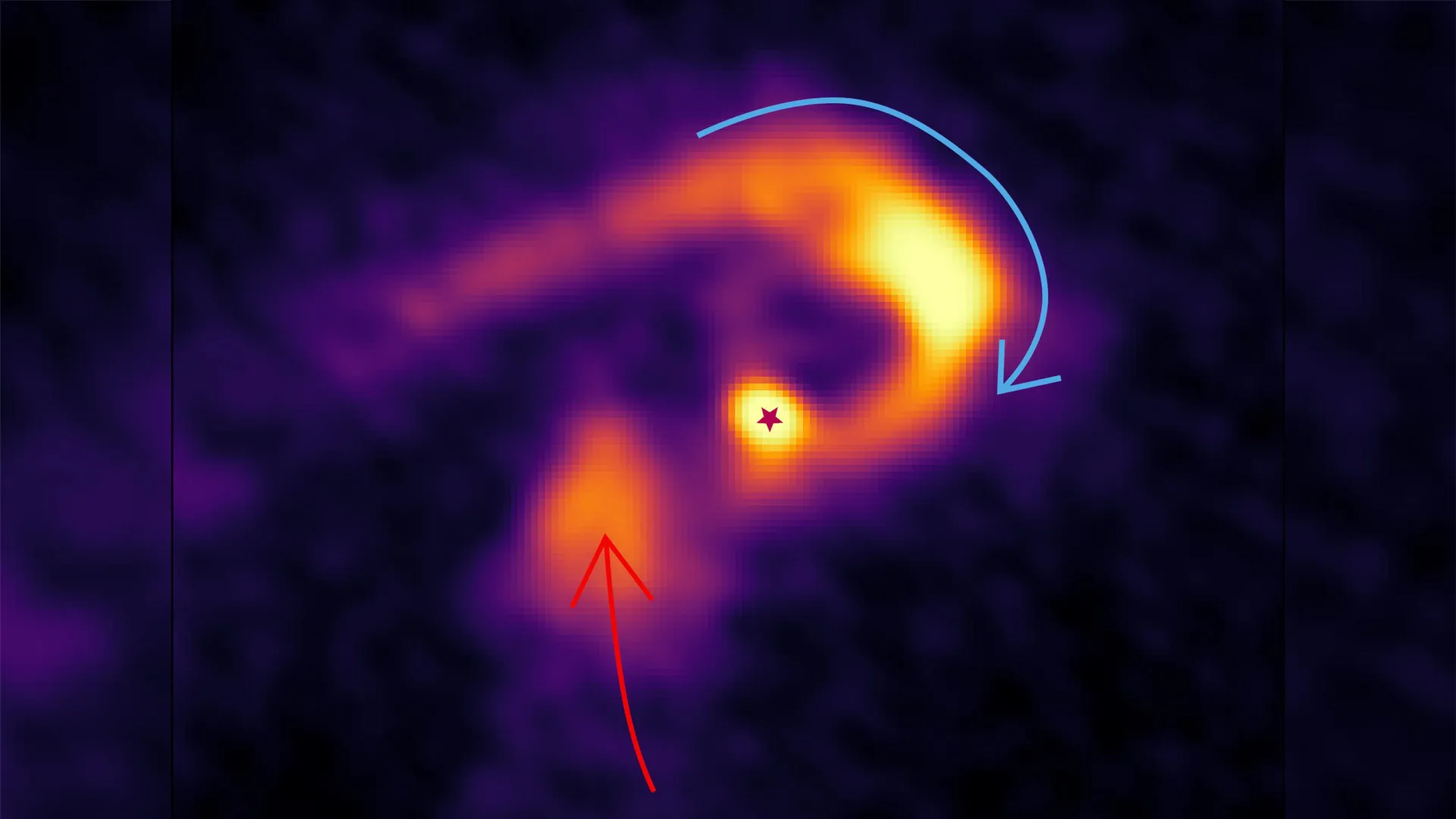The size of our universe and the bodies within it is incomprehensible for us lowly humans. The sun has a mass that is more than 330,000 that of our Earth, and yet there are stars in the universe that completely dwarf our sun.
Stars with masses more than eight times that of the sun are considered high mass stars. These form rapidly in a process that gives off stellar wind and radiation, which could not result in stars of such high mass without somehow overcoming this loss of mass, or feedback. Something is feeding these stars, but how exactly they can accumulate so much mass so quickly has remained a mystery.
Observations of enormous disk-like structures that form around a star — accretion disks — had been proposed as the chief way of rapidly feeding young stars. However, a team of researchers from several institutions including Kyoto University and the University of Tokyo, has discovered another possibility.
“Our work seems to show that these structures are being fed by streamers, which are flows of gas that bring matter from scales larger than a thousand astronomical units, essentially acting as massive gas highways,” says corresponding author Fernando Olguin.
Following on previous research, the team required a higher angular resolution to observe this system in detail, since regions forming high-mass stars are more distant than those with lower mass. The researchers utilized the Atacama Large Millimeter/submillimeter Array, or ALMA, a powerful telescope in Chile composed of an array of antennae that can observe dust and molecular line emissions at millimeter wavelengths.
Their observations revealed a young star feeding from potentially two streamers. One such streamer was connected to the central region of the star, with a velocity gradient indicative of rotation and possibly infall. This suggests that the streamer carries enough matter at a high rate to quench feedback effects from the young star, eventually contributing to the overly dense region observed around the central massive star.
The research team expected to see a dust disk or torus of several hundreds astronomical units in size, but they did not expect the spiral arms to reach far closer to the central source.
“We found streamers feeding what at that time was thought to be a disk, but to our surprise, there is either no disk or it is extremely small,” says Olguin.
These results suggest that, independent of the presence of a disk around the central star, streamers can transport large amounts of gas to feed star-forming regions, even in the presence of feedback from the central star.
Next, the team plans to expand their research by studying other regions to see if this is a common mode of accretion that results in the formation of massive stars. They also plan to explore the gas close to the star to determine whether they can confirm, or rule out, the presence of small disks.
